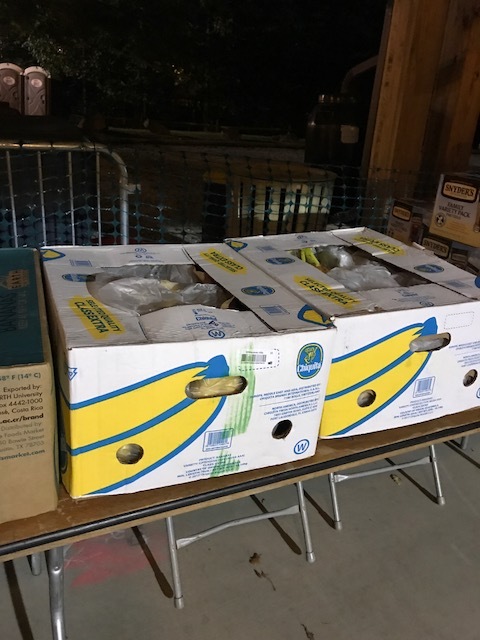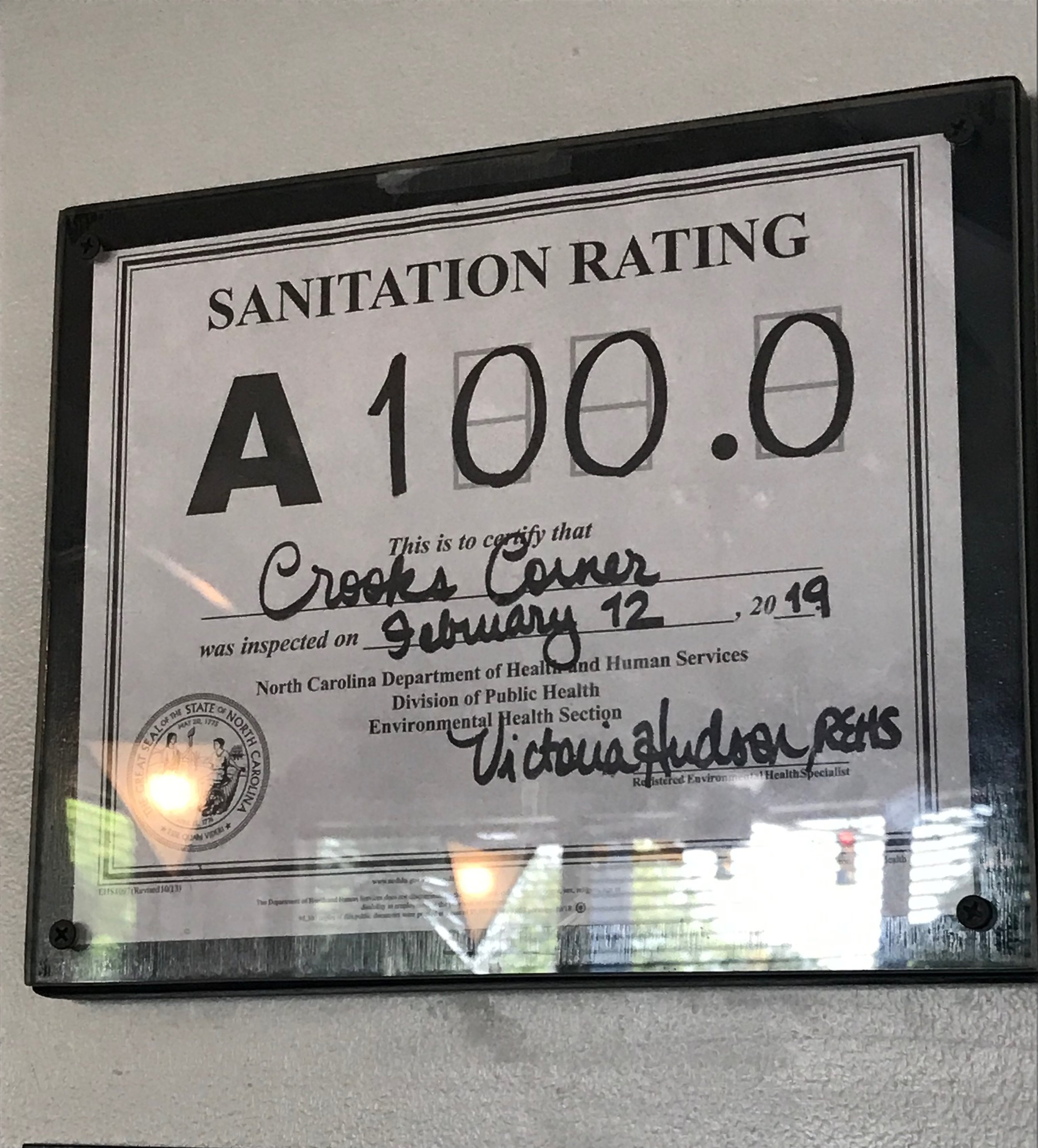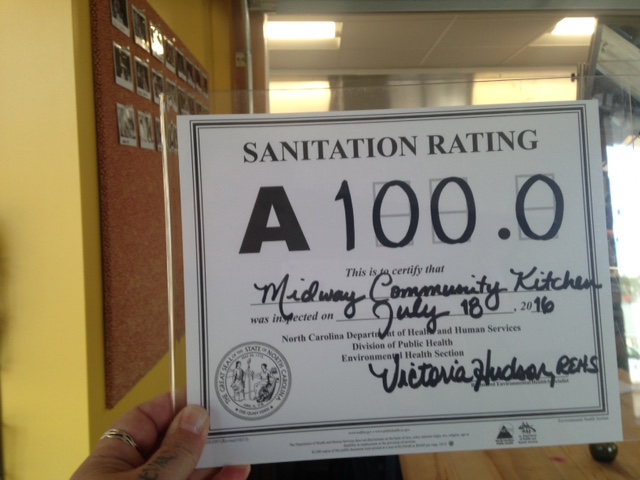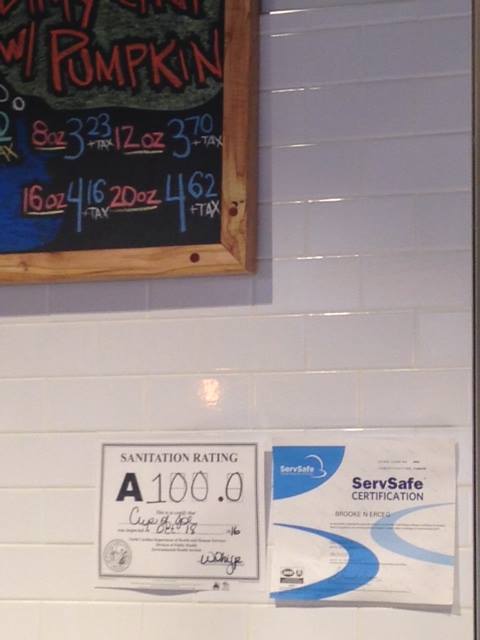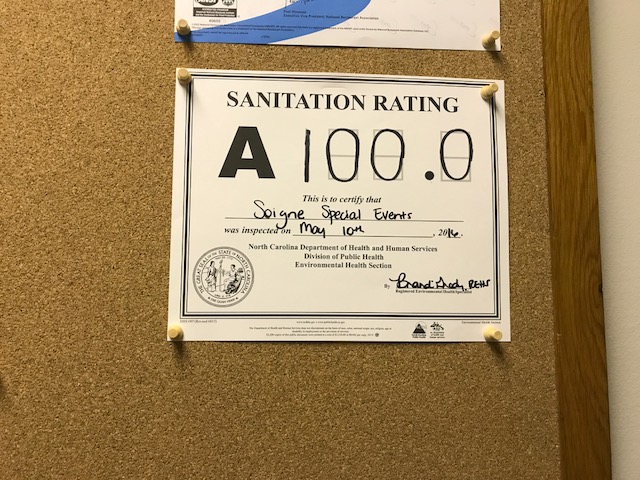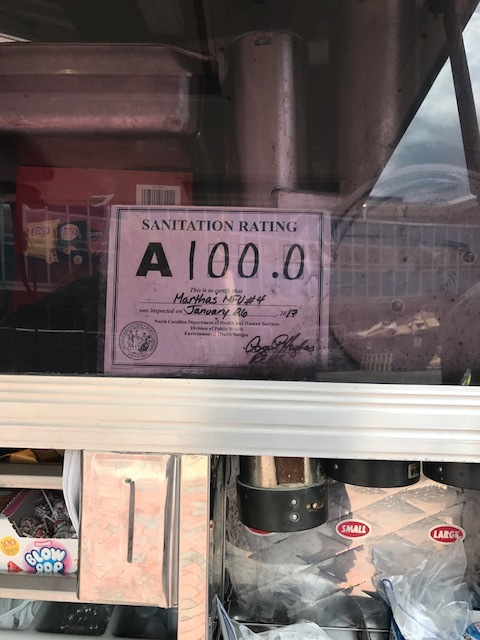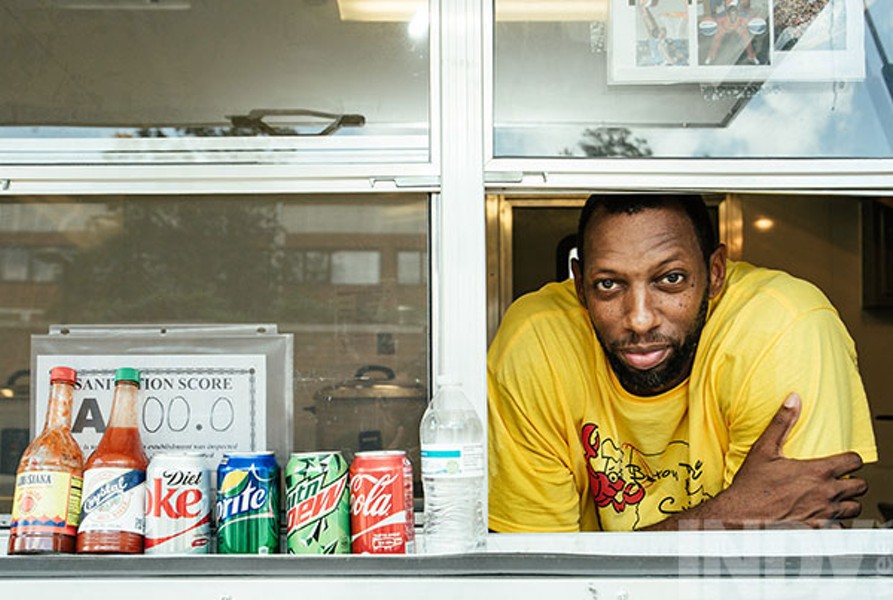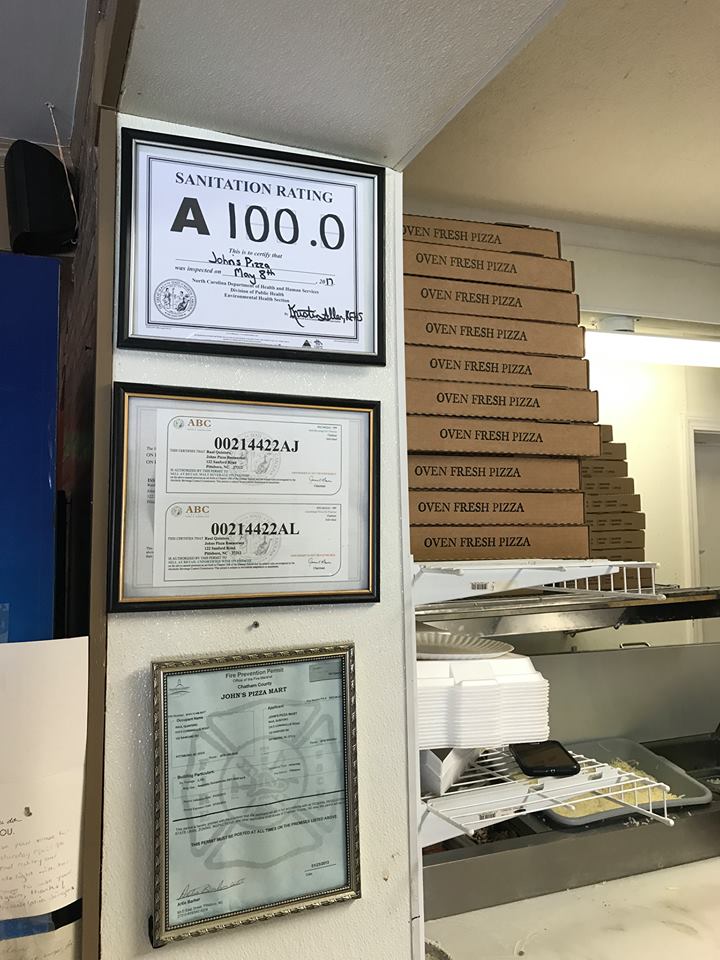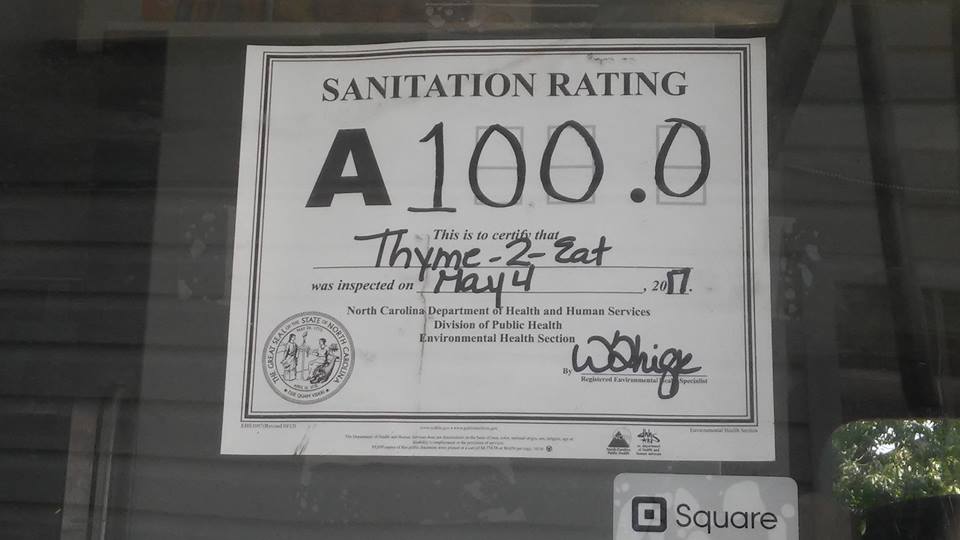Quintessential summertime fruit, peaches are zipper-fruits! Sweet or savory, centerpiece or topping, cocktail or frappe, fresh peaches are an endless delight and inspiration.
When friend Tucker Jessup and I cooked at the Greensboro Curb Market a few weeks ago, we made a few simple fun things to share for which, it should be said, we had no recipes. Market-fresh food requires none! I brought a small pantry stash with me (fresh ginger and lime, maple syrup and brown sugar, butter, salt and some spices) and we were given boxes and bags from market vendors. We just started slicing and cooking, incorporating ideas from some of the hundreds of people who wandered through and tasted, stirred, suggested, shared. I finally got around to cleaning up our notes, and the ‘recipes’ are below, along with some other favorites we wish we’d gotten to.
Obviously, the best way to eat a peach is outside in the grass, slightly bent at the waist and slurping. But since peaches grow on pretty big trees, and peach trees bear heavily, generations of peach lovers have given us about eight thousand ways to use them while they’re in season, and a few more for how to preserve their scrumptiousness. Grab as many as you can while they’re in season, eat your fill and fill your freezer.
Raw peaches are fine for almost any recipe, but if you prefer no fuzz or the brighter color, (especially when freezing), it’s easy and fun to blanch. That just means setting them a couple at a time into a pot of boiling water for about a minute, carefully lifting them out, then dunking into a big bowl of ice water. As soon as you can touch them without burning off your fingerprints, slip the skins off. The colors of blanched peaches are breathtaking, so it’s fun to try even if you didn’t need to!
Remember: only buy ripe peaches, never fuzzy rocks. If they’re not just slightly soft and incredibly fragrant, you’re in the wrong season: go buy something else. Or use frozen peaches! Don’t try to shoehorn a bad peach into a good dish, it’ll only make you sad.
** A hundred years ago, I ran a little downtown market at which we sold, among other things, local produce. A nearby peach grower kept us in cases of the most delectable peaches. When ‘stuck with’ a couple extra cases, I blanched, froze, jammed hundreds of peaches. Squirrels thoughtfully transplanted pits from the compost pile, so now I have several lovely peach trees in my yard. They only bear enough fruit for those squirrels’ descendants (did they plan ahead?!) but I get to cut armfuls of twigs to bring in and force for gorgeous peach blossoms in late Winter!
tucker’s peach salsa-on-the-fly
Tasty by the spoonful, would also delight a piece of fish, or grilled chicken, or a pork tenderloin! Try filling some warm tortillas with shredded lettuce or cabbage, bits of cooked fish, shrimp, chicken, beef or pork and a scoop of this. May be best at a picnic table outside : ) I would also totally spoon this over a salad and add some good cheeses and nuts!
about 3 cups of finely cut peaches, smaller than diced, but don’t get crazy
1 jalapeño, de-seeded first; use gloves! Trust me on this : )
1 small white onion, minced
1 large sweet pepper, minced
1 large tomato, minced
salt
half a lime or a splash of apple cider vinegar
Get a big bowl, cutting board and super-sharp knife. Start with peaches, then add the other ingredients as desired, occasionally tossing, juicing, tasting until you think it’s perfect.
When you find the flavors you love best, write it down and put your own name on the recipe.
tucker’s what-the-heck peach sauce:
It ended up with a pretty bold and fascinating flavor. Everyone who tasted it raised their eyebrows, and then thought about how they might use it! Play!
2 tablespoons butter
a couple of peaches, thinly sliced or diced
a 1” chunk of fresh ginger, peeled
fresh basil, chopped
apple cider vinegar (we used about half a cup)
honey (we used a few tablespoons)
salt (just a sprinkle)
ground cardamom (a pinch)
half a lime
In a saute pan over medium heat, warm butter and peaches for a few seconds, stirring. Before peaches soften, add all other ingredients, and a squeeze of lime juice (or sprinkle of vinegar).
Let it all simmer for a minute or so, stirring. Think about what you’re going to put it on, and adjust. Pork chops? Add a bit more tang. Ice cream? Maybe a bit of cinnamon? Shrimp? Maybe add a bit of hot sauce, or a minced jalapeno! It’s done when the peaches soften and you like it.
This is another recipe to taste, play, learn something about what you like.
peaches and cream grits (or ‘a cali-jersey girl moves to the south’)
Sweet grits! Don’t turn your nose up until you’ve tried them. Makes four cups, serving size is up to you : )
2 cups water
1 cup half-and-half
1/2 tsp salt
1 tablespoon butter
1 cup quick grits
2 ripe peaches, diced
2 tablespoons maple syrup (or brown sugar, if that’s what you’ve got)
In a saucepan, combine water, half-and-half, and salt and bring to a boil. Slowly add grits (as one Southern cook told me, “one at a time” : ) whisking until well mixed and back at a boil. Lower heat and simmer for five minutes, whisking often. This is not the time to go read the newspaper.
Stir in peaches, butter and syrup and simmer one more minute, stirring well.
Adjust flavors as desired!
___________________________________________________________________________________
There are so many more recipes I wish we’d had time to make. Clearly, I need an editor.
soups
in a blender, combine a peach or two with a bit of mint, lime juice, basil, lemon balm, or any combination; blend until super-smooth, adding water or cream until it is soup! Garnish with a drizzle of cream and a sprig of something pretty
salads
to bright, fresh lettuces and greens, add some salty ham, the cheese you love, and a sliced raw peach or grilled peach halves; drizzle with a bit of olive oil or that peach salsa you made
desserts
cobblers, crisps, crumbles, buckles, clafoutis, fools, pies, cakes, dumplings, fritters, ice cream, poached peaches, sauteed peaches and cream
party food
wrap slices of peach in prosciutto and toothpick
top baguette toasts with a bit of brie, a slice of peach, and a sprinkle of fresh bacon crumbles
top fresh baguette slices with ricotta, peach slices and fresh thyme
frappes and smoothies
blend fresh or frozen peaches with any combination of other fruits, berries, herbs
add water and ice as needed for light flavors, or milk, coconut milk or soy milk for smoothies
sandwiches
fill a baguette or other roll with brie, thinly sliced salty ham and fresh sliced peaches
cocktails
bellinis!
pina coladas!
daquiris!
margaritas!
bourbon anything!
breakfast
slice peaches into any baking mix or quickbread recipe
peach pancakes
peach, cream cheese, pecan stuffed french toast… and a nap
slice into any hot cereal
mix into good granola with yogurt
PS: I’m one of several chefs and cooks who would be happy to come to your market, house or school and cook with you, your class or homeschool group, your family, civic group or bunch of friends.
Let’s master some basic kitchen skills, and play with whatever foods you love or want to learn about, and when we’re finished you’ll have recipes, new skills and great memories.
Use your imagination and let’s put together a class!







